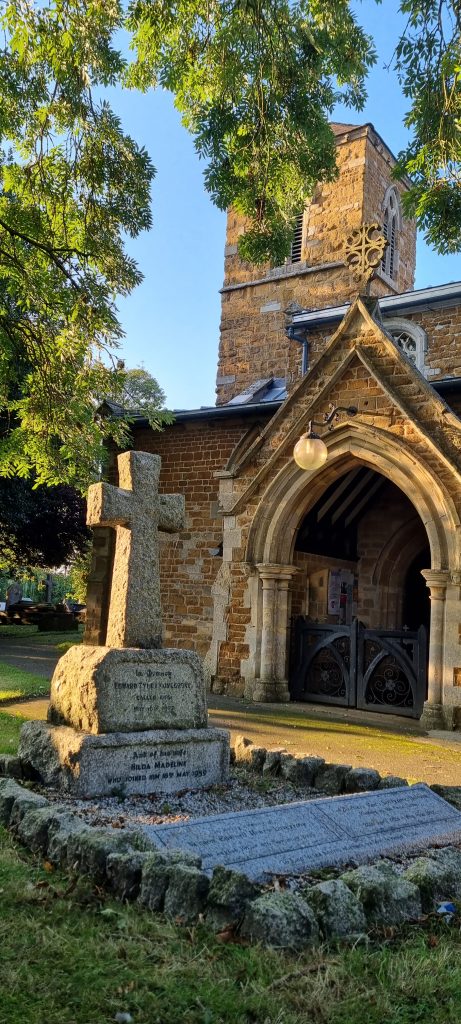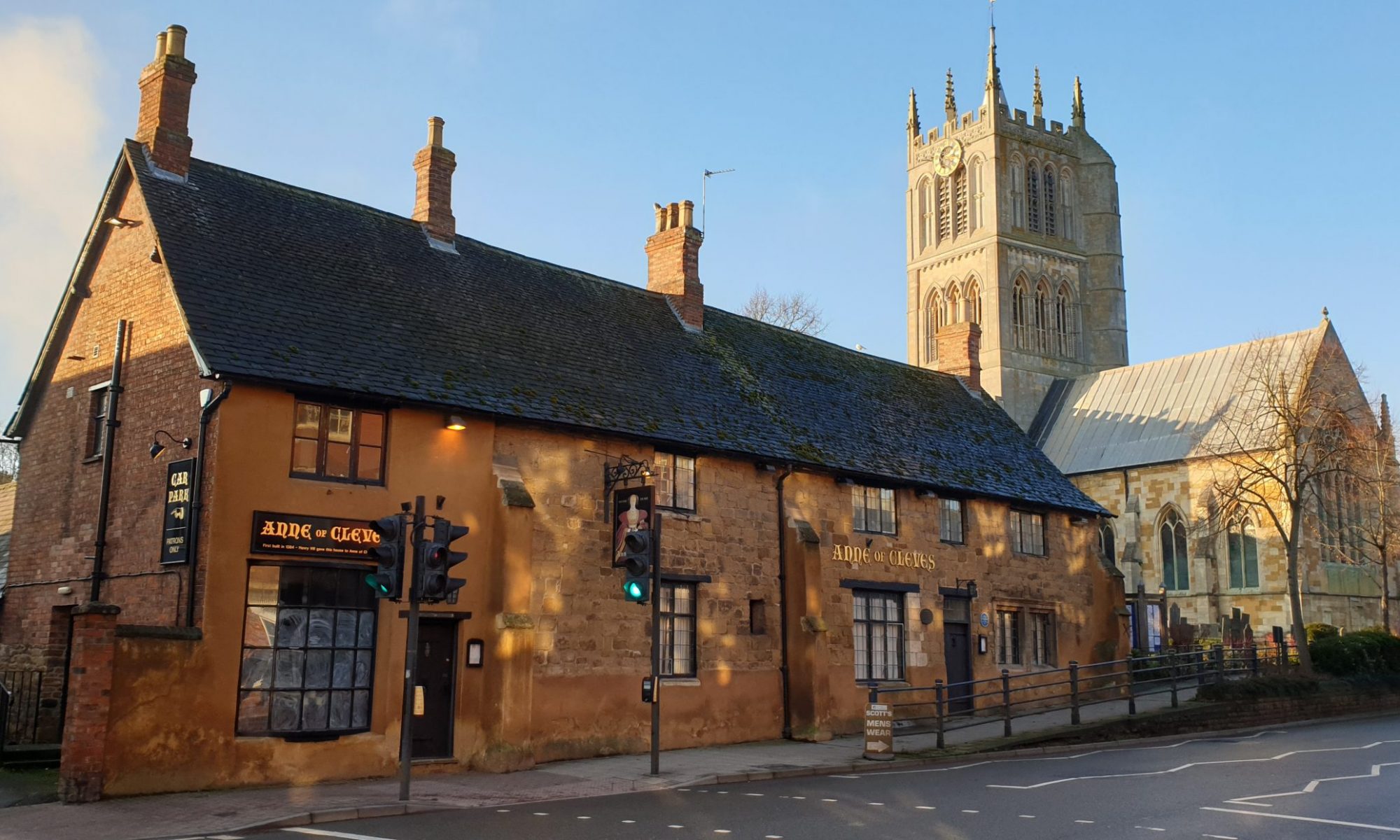“Melton Officer Dies in a Nazi Camp” was the headline of the news article published in the Leicester Evening Mail on 11th January 1943. The officer in question was Peter Anthony Lovegrove.
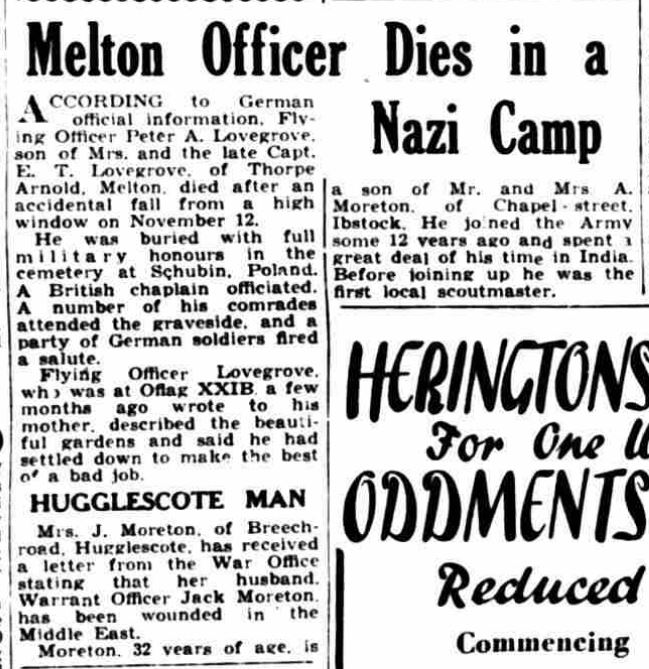
Peter was born in Melton Mowbray on the 3rd March 1920 as the middle child of 3. His parents were the late Edward Tyler Lovegrove and his wife Hilda, of Thorpe Arnold. Peter’s elder brother Vernon was born Sept 1917 and his younger sister Joyce in Dec 1921.
Within a few years of the children being born, their father Edward, died on 16th May 1922 at their home in Thorpe Arnold. His death was put down to War Related Sickness”…a victim of consumption [pulmonary tuberculosis], primarily contracted through War service.”
Edward had served with the Royal Army Service Corps during the First World War. He was given a commission in the ASC in 1915 as a Lieutenant when he proceeded to France in the December 1915. He was promoted to Captain whilst serving with the 55th Division until the summer of 1918 when he was invalided out of the service with a Silver War Badge suffering from the effects of being gassed and having 2 attacks of pleurisy.
Peter, aged 8 was sent for schooling at the Oakham School from 1929 starting off in the Junior House, followed by the School House which he left in 1936. Whilst at school he had the following achievements
- Relay Race (under 13): won with team B – Spring 1930.
- Form 1 Arithmetic Prize: Summer 1930.
- Scouts: in the Fox patrol – Summer 1932.
- Cricket under 14: awarded Colours – Summer 1933.
- Form 4 Trustees’ Prize: Winter 1933.
- Drama: played Blanch of Spain in the Form 5 production of King John – Spring 1936.
- Fives: Captain – Winter 1936.
- O.T.C.: Certificate ‘A’ – Winter 1936.
After leaving school, he trained as a chartered surveyor and on the 24th May 1939, the Nottingham Journal published a list of ‘local candidates’ who had passed their professional examinations of the Chartered Surveyors Institute. Peter was one of those listed that had passed Intermediate Examination Part One.
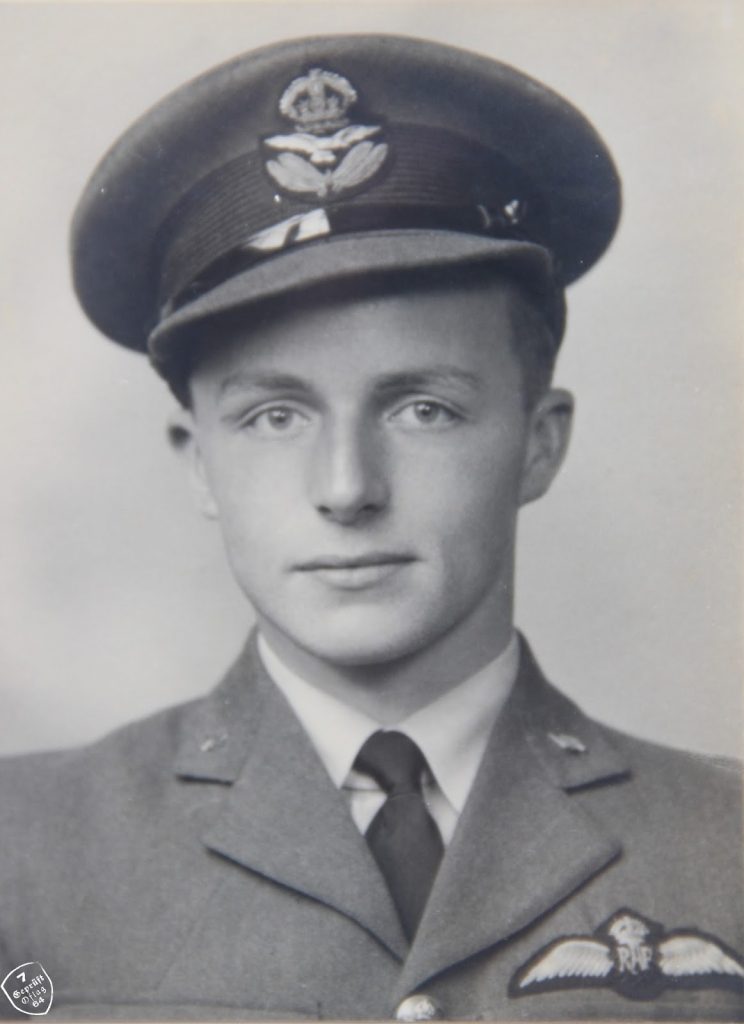
Peter volunteered for the Royal Air Force (Volunteer Reserve) in November 1939 and was enlisted in 1940 as a Leading Aircraftman and allocated service number 1164992. According to the London Gazette, he was granted a commission for the duration of hostilities as a Pilot Officer on probation wef 9th March 1941 and allocated service number 62324.
After being commissioned, he trained as a pilot and earnt his wings. He spent some time at RAF Cottesmore and whilst there he visited his old school in Oakham on several occasions.
At some point in his military career, Peter was posted onto No 83 Sqn based at RAF Scampton.
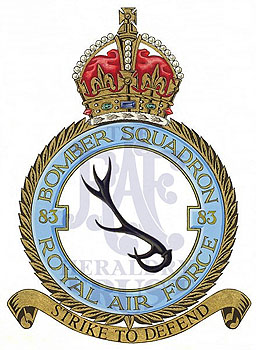
On the 8th April 1942, No 83 Sqn had been tasked with a bombing raid on Hamburg with their target being the Blohm & Voss shipyard. Five aircraft from No 83 sqn were involved from the total of 272 aircraft made up of 177 Wellingtons, 41 Hampdens, 22 Stirlings, 13 Manchesters (of which 5 were from 83 Sqn), 12 Halifaxes and 7 Lancasters.
The 83 Sqn Manchesters involved in the raid were: L7484, L7385; R5833; R5838 and L7427 and all equipped with a bomb load of 6 x 1,000lb general purpose bombs.
According to the Bomber Command War Diaries, the raid on Hamburg was not a success. Icing and electrical storms were encountered and out of the 272 aircraft involved in the raid, only 188 reported bombing in the area.
Later records from Hamburg reported that the equivalent of 14 aircraft loads fell on the city causing 8 fires of which 3 were large. There was no particular reference to property damage and 17 people were killed and a further 199 injured.
Bremen reported a load of incendiaries were dropped very accurately on the Vulkan shipyard which caused damaged to 4 U-boats under construction plus several surrounding buildings.
In addition to the Hamburg raid, Bomber Command were also carrying out smaller minor operations involving 13 Wellingtons to Le Havre, 3 Blenheims intruding over Holland, 24 aircraft minelaying near Heligoland and 16 aircraft on leaflet flights to Belgium and France.
It was these leaflet raids that 83 Sqn provided 2 Manchesters R5837 and R5873 to carry out a nickel raid on Paris.
From a total if 328 aircraft involved in the two Ops that night, 6 aircraft were lost, 5 from the Hamburg raid and 1 from the leaflet drops.

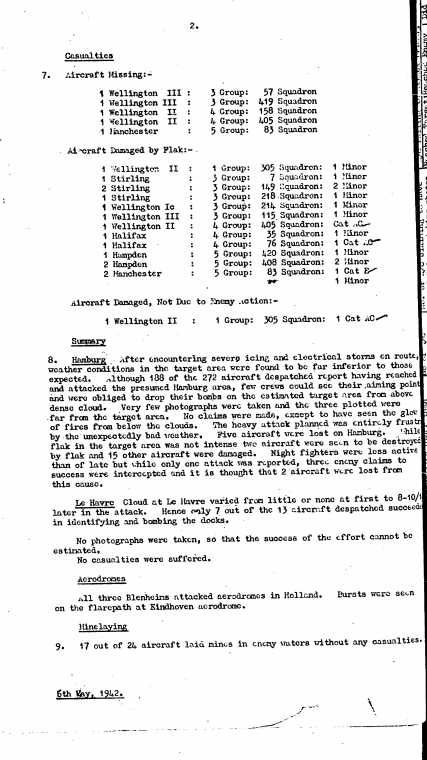
R5837 that took part in the leaflet raid on Paris, took off from Scampton at 21:01Hrs and the crew were: Plt Off Proule; Plt Off Renvoize; Sgt Fitchett; Fg Off Goodman; Plt Off Dickinson; Sgt Neary and Sgt Porter. In addition, the Sqn Intelligence Officer Plt Off R J Dyer had accompanied the crew to gain an insight into operational flying.
On the outbound leg of the sortie, the aircraft was hit by flak in the Starboard engine. Unable to maintain height, they ditched their leaflets near Calais and started an early run home. The aircraft ditched in the sea off Manston and only the pilot (Plt Off Proule ) managed to make it to the dingy. The W/Op followed correct procedure and gave a fix which enabled the pilot to be found by the Search and Rescue unit after 14½ hours. Sadly, the rest of the crew didn’t make it and within a couple of days, the bodies of Plt Off Renvoize and Sgt Fitchett were washed ashore and taken for burial at Thundersley St Peter Churchyard in Essex and Vlieland General Cemetery in the Dutch Friesian Islands respectively. The rest of the crew have no known grave and are commemorated on the Runnymede memorial.
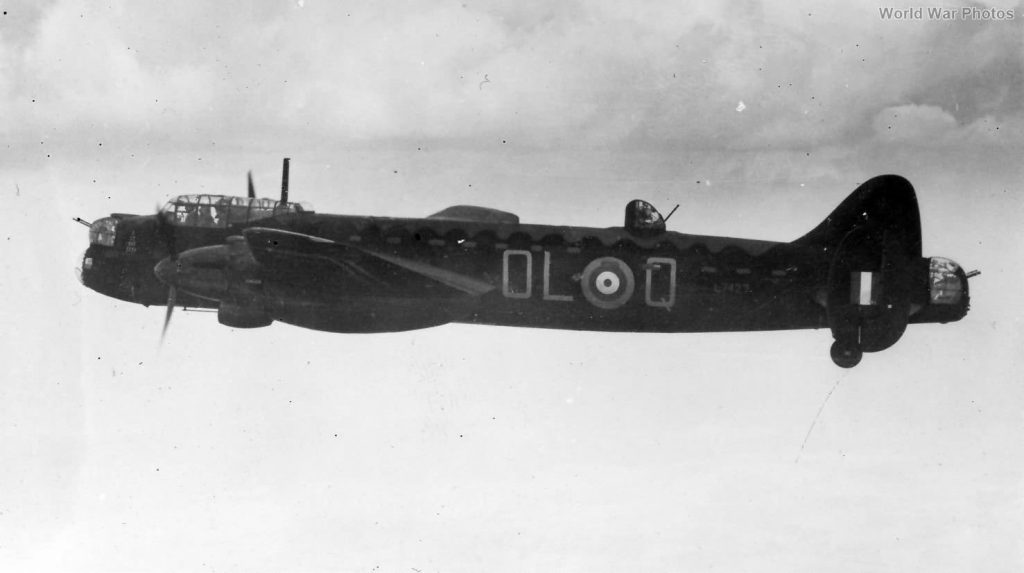
Peter Lovegrove was the 2nd pilot on Manchester L7427 OL-Q for Queenie tasked with the raid on Hamburg. His crew mates were:
- 67046 Pilot Officer Jack Heathcote Morphett RAFVR – 1st Pilot
- NZ/402188 Flight Sergeant Geoffrey Douglas Hutchinson RNZAF – Navigator
- 647009 Flt Sgt Albert Henry Salter RAF – Wireless Operator/Air Gunner
- 923926 Sergeant Reginald Stanley Williams RAFVR – Wireless Operator/Air Gunner
- R.66159 Sgt George Charles Fisk RCAF – Air Gunner
- R.69897 Sgt Charles Dewitt Gellatly RCAF – Air Gunner
According to the 83 Sqn Operational Record Book, they left Scampton at 22:15Hrs and were reported ‘missing without trace’. Further information has since come to light that L7427 was last heard on wireless transmission at 00.10 hours, at which time it was believed to be in the Lastrup area of Germany.
It was later reported to have crashed in the small town Ermke near Lastrup-Cloppenburg. It was claimed to have been shot down by Fw Gerhard Goerke 1/NJG3 – West of Lastrup South East of Cloppenburg at 00:49Hrs and also claimed by Flak of 1/schw Res Flak Abt 603 (unknown type) near Lastrup, Cloppenburg at 00:45Hrs.
Sadly, all the crew died in this incident, apart from Peter Lovegrove who as mentioned previously was the 2nd Pilot.
The crew who died on the 9th April were originally interred at the Russian Vechta Cemetery but later they were exhumed and re-buried on the 12th June 47 at the Sage War Cemetery. Most of the 816 casualties buried in the Sage cemetery were airmen lost in bombing raids over northern Europe whose graves were brought in from cemeteries in the Frisian Islands and other parts of north-west Germany.
There is an interesting story on the ‘Short Stirling & RAF Bomber Command Forum’ website posted by a user relating to this aircraft and the sortie on the 8th April.
“I am doing some research into the earliest use of the radar system H2S first used officially by Bomber Command in January 1943.
The reason is my wife’s uncle was 21 year old commanding Pilot Officer Jack Heathcote Morphett who died on the 9th April 1942 in a raid over Germany.
The story in the family goes that Jack had completed 30 successful missions and was on leave in Wales, R&R when he got a call from his commanding officer at Scrampton.
Two Avo Manchesters were to take part in a raid over Hamburg and the nominated Pilot Officer was regarded as not being sufficiently experienced, and the mission was an important one.
This plane was fitted with some experimental equipment- he told his sister but could not say more, -and it was essential an experienced pilot ensured that if the plane was in difficulty
and had to crash, that the equipment did not fall into the hands of the Germans.The plane left RAF Scrampton at 22.15h.
The last signal was received at 1am over the Lastrup area of Germany, and the plane crashed NE of Cloppenburg.
My mother in law was told by the RAF that Jack managed to get his co-pilot free who bailed out but the plane lost control and he had to ensure that the secret equipment was totally destroyed.
The reference was L7427-01-Q.
Sadly Pilot Officer Lovegrove who bailed out was captured and died in November 1942 in Pozen Old Garrison Prison, Poland.
Does anyone know if this plane might have been fitted with a test rig of H2S? the first operation use was 30th January 1943, and on the 2/3 February a Sterling Pathfinder crashed without destroying
the H2S equipment and Telefunken developed within 6 months a detector of the equipment from the crashed plane.
Surely, before the system went into full operation there must have been some trials?
Any thoughts or advice on where to research this would be much appreciated.
Stephenph.
There is no mention in the record books that Jack Morphett was recalled from leave nor any mention of any special equipment being fitted to L7427. However, the chat forum goes on to say;
“Two RAF officers came and consoled Barbara Morphett his sister,(later Lady Barbara Lawrence, wife of the Senior Master and Queen’s Remberencer) whom he had taught to fly. They gave her the impression that he may have been forced to crash the plane to destroy certain vital secret equipment.”
Another member of the forum called Volker takes the discussion further:
“I know the crash site exactly. I have located the crash site and explored with a metal detector. I have found many small parts of this Manchester.
For me, a long time it was not clear which aircraft crashed on this pasture. The records in the village chronicles were totally wrong. A difficult case. In the last year I have a found a witness. He is 86 years old and in good health. We talked a long time and he said to me he remembered a name. The name was Palagref.
This crew member was injured taken at night by his family. After a short time I knew that it was the co. pilot P.A. Lovegrove. Now I am in very good contact with the nephew of Peter Anthony Lovegrove. His name is Peter Lovegrove. Peter comes to Germany on 23.April with his family and visit the crash site. We have full support of the community and authoritis. Near the crash site we built a memorial (rockstone with a plaque and a wooden cross) in Memoriam for the crew.
The story is very interesting and I hope other members of the crew see this report. Maybe additional contacts incur.
For any further assistance, I am very grateful. There are many pictures of this aircraft. Unfortunately, there seems to be no pictures of the crew. To date I have only a picture of P. A. Lovegrove.”
As confirmed in the eyewitness account above, Peter was injured and taken in by a German family. The Leicester Evening Mail on the 10th June 1942 states he had slight injuries to his forearm. At some point he must have either been captured or handed over to the German authorities as he became a prisoner of war (POW No 778).
He was initially held in Dulag Luft (Lazarett Hohe Mark), from 9th April 1942 until he was transferred to Stalag Luft III (Sagan) on 28th May 1942, then again transferred to Oflag XX1-B (Schubin) on 17th September 1942.
The Leicester Evening Mail and Leicester Chronicle reported in their newspapers on the 10th & 13th June 42 that Pilot Officer Lovegrove, son of the late Captain E T Lovegrove has been promoted to Flying Officer.
It was whilst he was at Oflag XX1-B that he died. According to a telegram that his mother received from the Geneva Red Cross, dated 23rd November 1942, stating that, according to official German information, he had died in the camp hospital on 12th November 1942 from injuries received as a result of falling accidentally from a high window.

He was alone, and it was believed he had been surveying the surrounding countryside with a view to escaping, but lost his balance and was killed instantly when he fell on his head at 2.45pm onto the pavement at the hospital entrance, fracturing his skull.
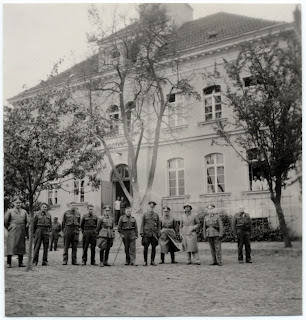
This story is recalled in the book “Moonless Night: The Second World War Escape Epic” by B A Jimmy James. “Another tragedy struck soon after. A young flying officer called Lovegrove fell off the top of the big white house, used as a hospital, to crash to his death three stories below on the concrete path at the entrance. He was a member of the mapping intelligence department, and a desire to get a good view for his survey had toppled him to his death.”
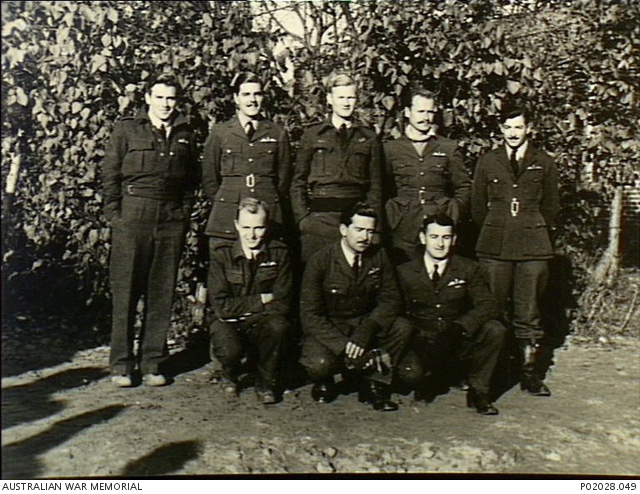
His funeral service and burial at the Szubin Cemetery was described by the Red Cross in a letter to his Mother, on 23rd March 1943, as having taken place with full military honours at 10.30 on 14th November 1942.
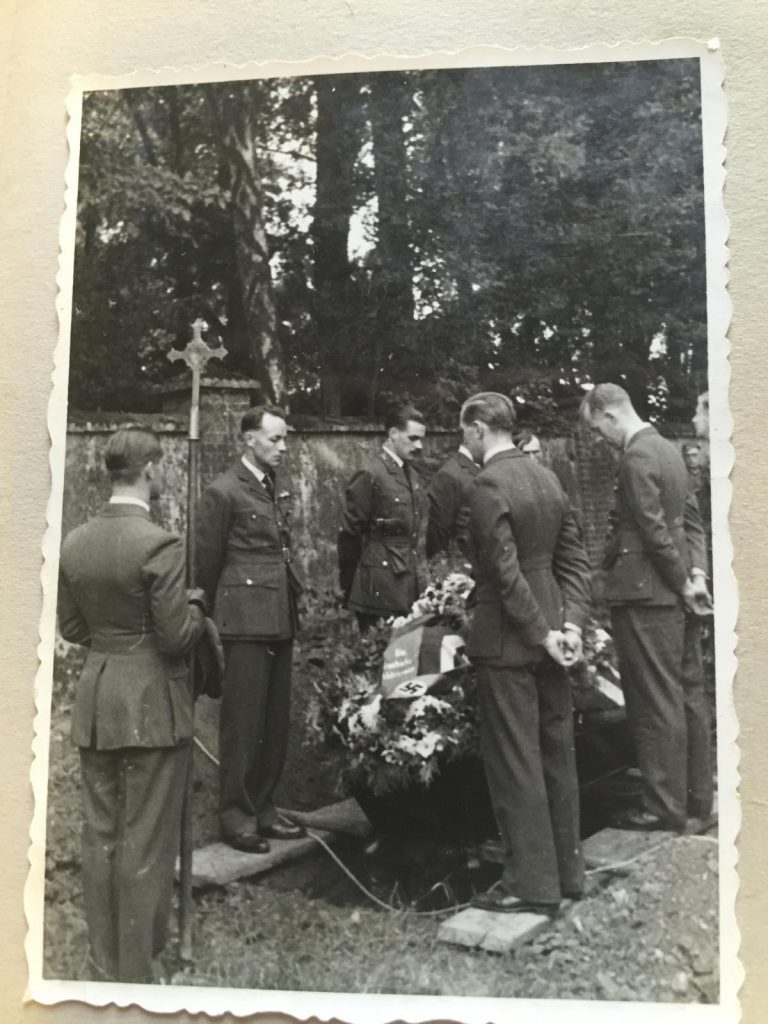
A Chaplain of the Forces conducted the Service where 30 Officers were in attendance, the ‘Last Post’ and ‘Reveille’ were sounded by a British soldier, and 3 volleys fired by a German firing party. Six wreaths were sent, 4 from his comrades, 1 from the RAF PoWs at Stalag Luft III, and 1 from the German Kommandatur (Military Government Headquarters).

The Oflag 64 Record website recalls a letter from Senior British Officer Wing Commander Harry Day (dated 20th November 1942) which describes in detail all the tragic circumstances of Peter’s death:
“I am a Senior British Officer at this camp and I am writing to tell you how very distressed we all are over the terrible and unexpected accident which overtook your good looking and brave son. I have known him since his first arrival at Stalag Luft 3 and since hence I have a very high opinion of him. I have called a strict investigation to be undertaken by S/L Tench, who knew your son in England and it appears that your son climbed out of the top of 3rd storey window in the hospital building at 2:45 in the afternoon he either became giddy of slipped and fell onto the pavement at the entrance of the hospital. The two British Medical Officers were actually on the scene and attended to your son, but your son must have been killed instantly as he fell on his head. The reason your son climbed out onto the window ledge is not absolutely clear but as there was no one with him, but it can be put down to his keenness to escape. The window being good vantage point to see the countryside. As you probably know your son made one unsuccessful attempt to escape with a man of his spirit I am certain he was planning another”.

The Leicester Evening Mail 18th December 1942 “PRISONER’S FATE A letter the Red Cross has been received by Mrs E T. Lovegrove of Thorpe Arnold stating that her son Pilot Officer Peter Lovegrove RAF a prisoner of war has died through an accident. No cause of death is given. The letter that states that confirmation from the Air Ministry will follow. This has not come through and enquiries are being made. A few days ago Mrs Lovegrove received a letter from her son stating that he was well set up for the winter in a new camp. and had met old school friends.”
On the 8th October 1948, his body was exhumed from the Szubin cemetery and re-buried in the CWGC Poznan British Military Cemetery (now Poznan Old Garrison Cemetery), Plot 5, Row J, Grave 14.
Following the loss of Manchester L7427 OL-Q for Queenie, the next aircraft on 83 Squadron to be allocated the code ‘Q for Queenie ‘ was Avro Lancaster R5868 OL-Q which was delivered to No 83 Sqn on 29th June 1942.
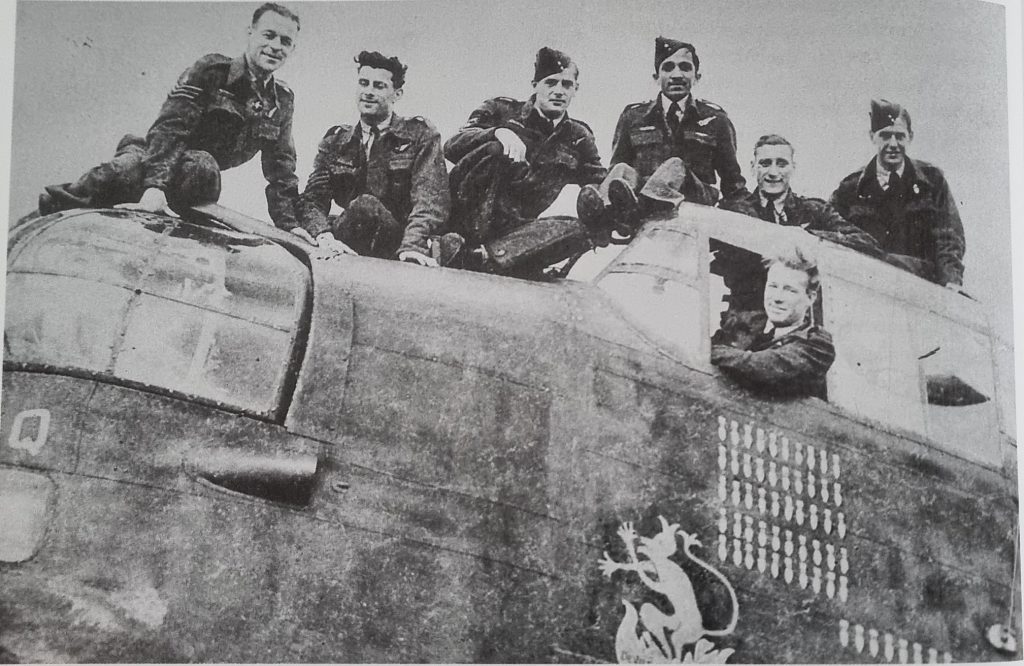
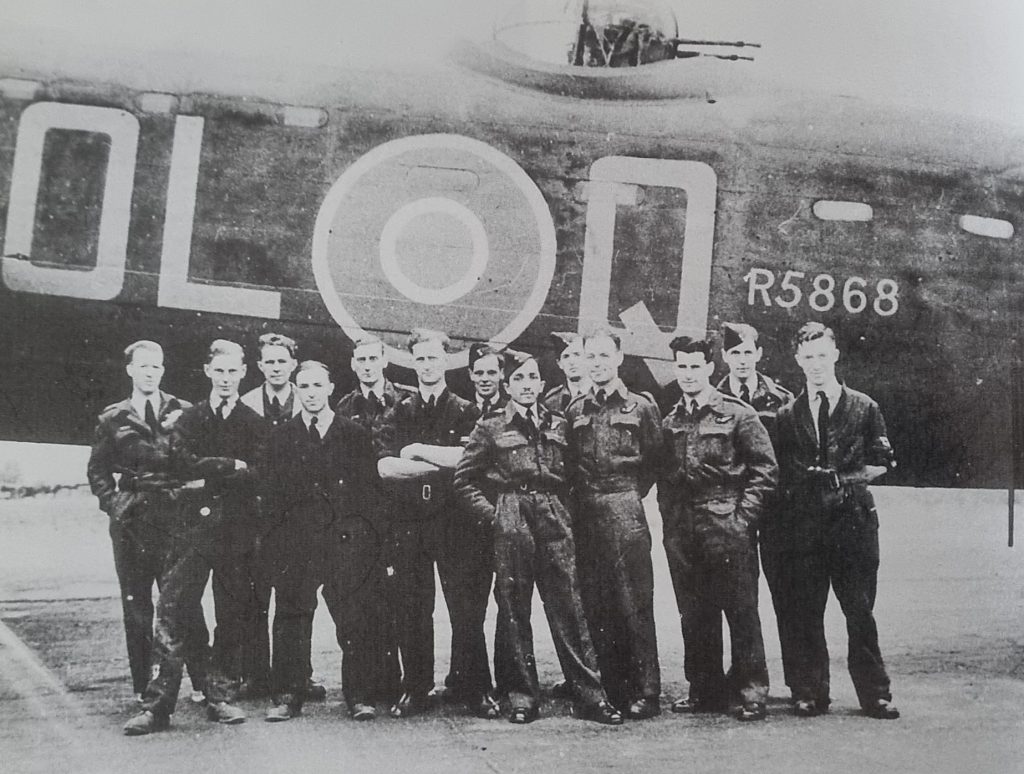
Lancaster R5868 is probably the most famous Lancaster as the one credited with the highest number of ‘ops’ to survive to the present day, completing 137 known operations whilst serving with 83 Sqn, 467 RAAF Sqn, 207 (Leicesters Own) Sqn and back to 467 RAAF Sqn.
The aircraft is now on display in the RAF Museum at Hendon wearing the codes PO-S for Sugar that she wore whilst serving with No 467 RAAF Sqn.
Peter is commemorated on his parents grave at Thorpe Arnold.

